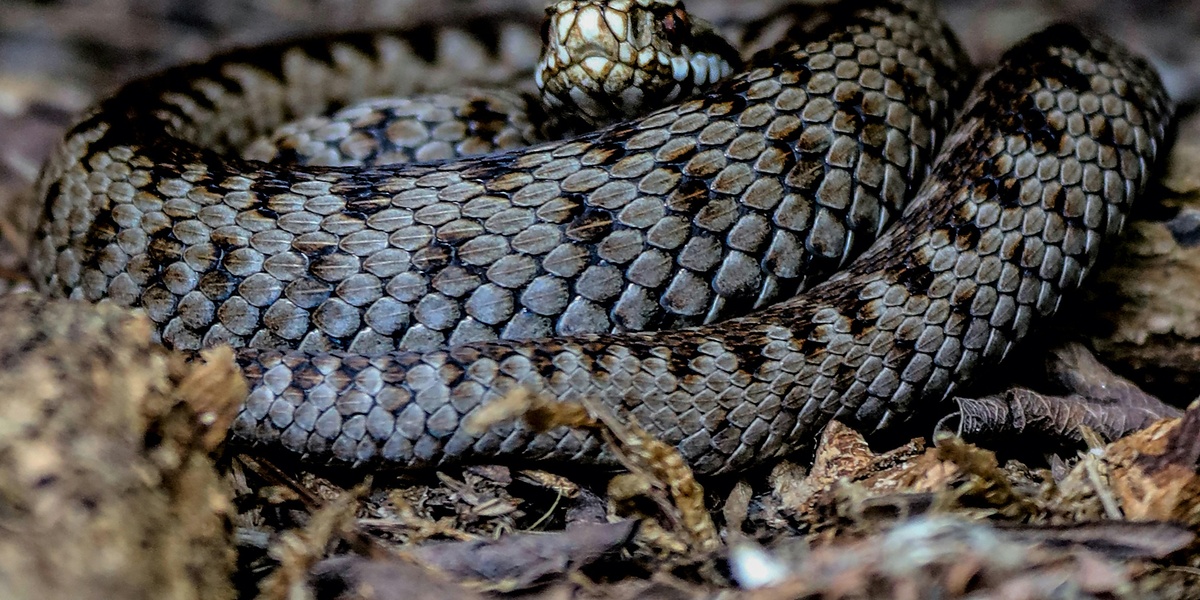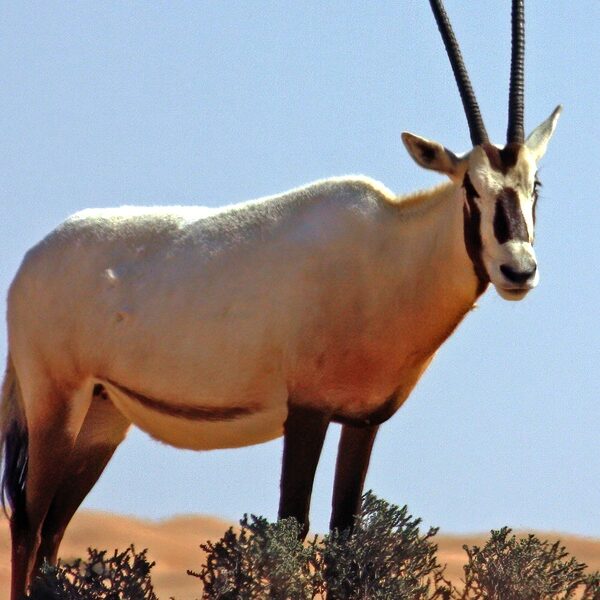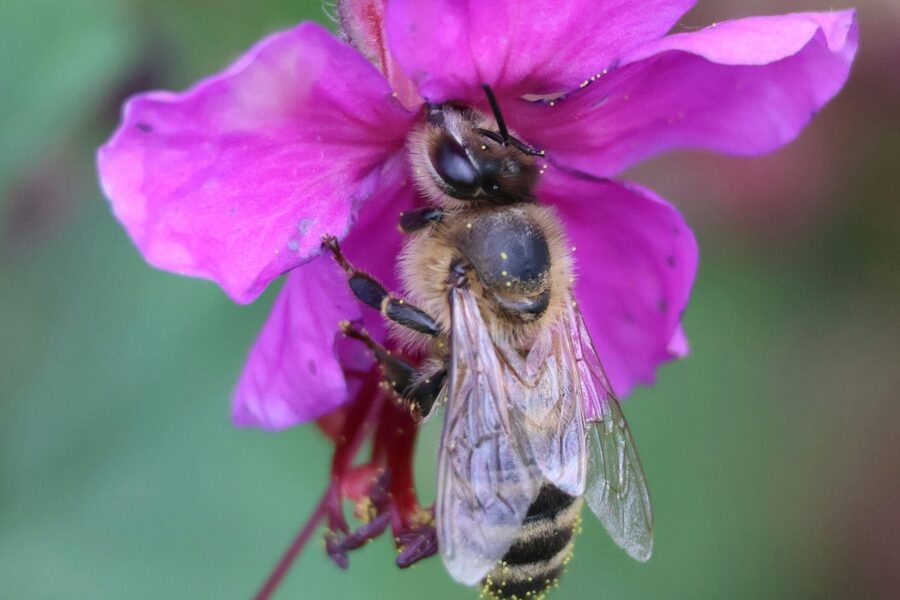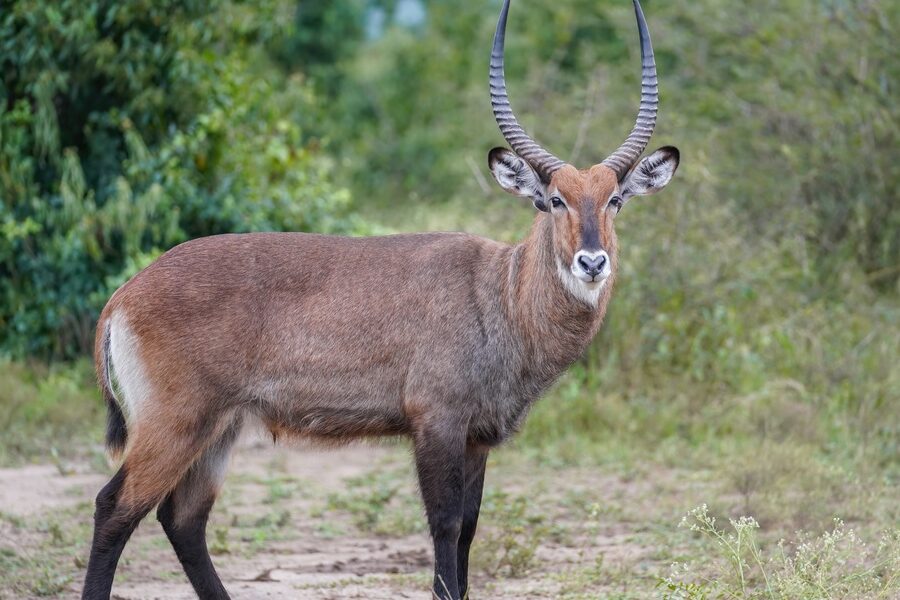Denmark’s varied coastline, heathland and scattered woodlands support a small, quietly present group of reptiles adapted to a northern climate. They’re easy to overlook—active mostly in warmer months and often tucked away in sunlit spots or under stones—but each species contributes to local food webs and biodiversity.
There are 8 Reptiles of Denmark, ranging from Common Adder to Smooth Snake. For each species you’ll find below the data organized as: Scientific name,Max length (cm),Danish range — giving a quick reference to identification, size and where they occur; you’ll find below.
Where in Denmark am I most likely to see these reptiles?
Look for reptiles in sunny, sheltered microhabitats: dry heaths, sandy dunes, south-facing slopes, stone walls and the edges of wooded areas. Pond margins and reed edges can also attract species hunting amphibians or basking, and coastal dunes are important for several snakes.
Are any of these species protected and how should I behave if I find one?
Yes, many Danish reptiles are legally protected and vulnerable to disturbance; avoid handling or moving them, keep dogs leashed, and report notable sightings to local wildlife atlases or conservation groups to help monitoring and protection efforts.
Reptiles of Denmark
| Name | Scientific name | Max length (cm) | Danish range |
|---|---|---|---|
| Slow Worm | Anguis fragilis | 50 | Widespread in most of Denmark |
| Common Lizard | Zootoca vivipara | 18 | Widespread in most of Denmark |
| Sand Lizard | Lacerta agilis | 23 | West Jutland, North Jutland, North Zealand |
| Grass Snake | Natrix natrix | 120 | Widespread, but less in West Jutland |
| Smooth Snake | Coronella austriaca | 80 | South Jutland, West Jutland |
| Common Adder | Vipera berus | 80 | Widespread in most of Denmark |
| European Pond Turtle | Emys orbicularis | 25 | Southern Jutland |
| Red-eared Slider | Trachemys scripta elegans | 30 | Scattered, often near urban areas |
Images and Descriptions
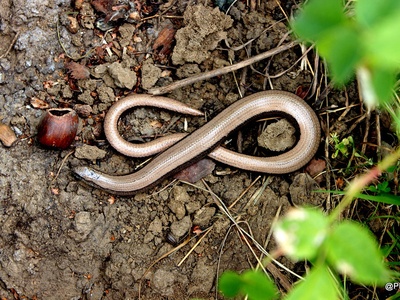
Slow Worm
A legless lizard, not a snake, with smooth, coppery-brown skin. Widespread in gardens, grasslands, and heathland. Active from spring to autumn, this harmless reptile eats slugs and insects. A common, often surprising, garden visitor throughout most of Denmark.
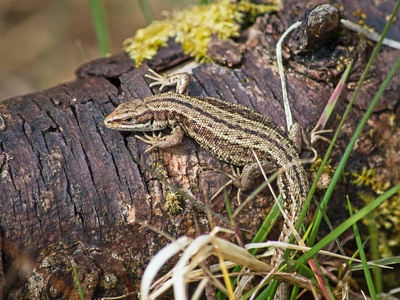
Common Lizard
Denmark’s most common reptile. A small, brown, and incredibly fast lizard found on heaths, dunes, and sunny banks nationwide. Uniquely, it gives birth to live young. Often seen basking on logs or paths from April to October. Look for its quick, darting movements.

Sand Lizard
A stocky lizard; males turn bright green during mating season in spring. Prefers sandy heathlands and coastal dunes, mainly in Jutland and North Zealand. This species is rare and protected in Denmark, laying eggs in warm sand to incubate.
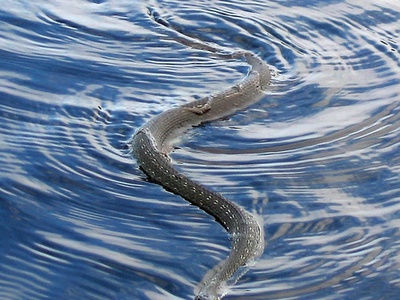
Grass Snake
A large, non-venomous snake with a distinct yellow or white collar behind its head. Found near water across most of Denmark, hunting amphibians. An excellent swimmer, often seen basking near ponds. Lays its eggs in warm compost or manure piles.

Smooth Snake
Denmark’s rarest native snake, found only in a few heathland areas of Jutland. Slender, grey-brown, with paired dark spots along its back. Often mistaken for an adder but has round pupils. Secretive and non-venomous, preying mainly on other reptiles. Highly protected.

Common Adder
Denmark’s only venomous snake, identified by a dark zigzag pattern down its back and vertical pupils. Widespread in heaths, dunes, and open woodlands. Generally shy but will bite if threatened. Active from early spring, when it is often seen basking in sunshine.

European Pond Turtle
A dark-shelled freshwater turtle with yellow spots or streaks. Once extinct, it is now reintroduced in a few protected wetlands. This is Denmark’s only native turtle. It hibernates in mud at the bottom of ponds during winter. Sightings are extremely rare.
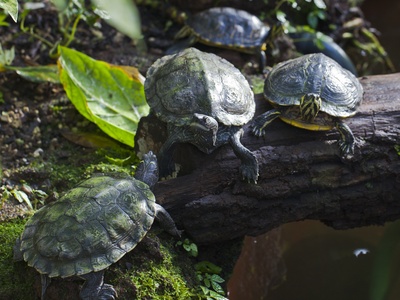
Red-eared Slider
An introduced species from North America, often released from captivity. Identified by the prominent red stripe behind each eye. Found in ponds and lakes near cities. While individuals thrive, successful breeding is limited by the cool Danish climate, but they are established.
